A family of golden-winged butterflies lives on a military reserve in central Pennsylvania, feasting on violets and the nectar of milkweed and thistles.
“It’s a very attractive butterfly, large and charismatic,” said Tim Becker, a zoo naturalist. “We always say it’s like a monarch that’s been dipped in chocolate. It’s a pollinator, which you hate to lose these days.”
Losing this insect is a real possibility. The artillery range at Fort Indiantown Gap is one of only two places in this part of the country where regal fritillary butterflies live.
The other is a zoo.
Saving the regal fritillary is what has put Becker and his colleagues at ZooAmerica in Hershey, Pennsylvania, on a mission of 11 years. This particular butterfly is being considered for the endangered species list.
Dan Rainville, USA Today Network – PA
The species teetering on the edge of the endangered list are what keep zoo naturalists, biologists and veterinarians busy all year around. As ZooAmerica and other zoological parks across the country open their gates this spring for families to visit animals housed in their parks, zoo employees remain busy in husbandry clinics and research labs behind the scenes, working on preserving species of animals, sometimes traveling to countries all over the world to do it.
When a cold snap in Texas stunned nearly 11,000 turtles last year, a swift response saved them.
“Who do you think saved all those turtles? It was zoos and aquariums,” said Jeremy Goodman, CEO of the Pittsburgh Zoo and Aquarium. Equipped with biologists and veterinarians with diverse backgrounds, zoos and aquariums farmed out experts to help save the turtles.
The work of conservation is as diverse as the zoos themselves:
- The Philadelphia Zoo’s animal trails in its park are being replicated in Brazil to save animals.
- The Bronx Zoo’s foundation was built on saving bison more than a century ago.
- In Baltimore, the Maryland Zoo works on conservation projects to bring back great apes from extinction and protect polar bears from climate change, but it also has saved a symbol of good luck — a frog — in Panama.
- On farmland in western Pennsylvania, the Pittsburgh Zoo and Aquarium has built a sanctuary that now houses five pachyderms, including a breeding bull that’s the most prolific in the country for artificial insemination of elephants.
There are occasional criticisms that animals should remain in the wild, but even PETA (People for the Ethical Treatment of Animals) agrees that accredited zoos and aquariums are doing important work.
“Quite honestly it’s one thing to say, ‘I love animals, leave everything in the wild.’ But honestly, there is no wildlife. There’s deforestation, there’s poaching, there’s wildfires. Zoos are the most prepared to help animals,” said Goodman.

Jim Breheny fell in love with zoo life as a teenager, giving camel rides to visitors during the summers. He’s now the director of the Bronx Zoo, a world renowned park run by the Wildlife Conservation Society, of which Breheny is also executive vice president.
Today, the zoo works with teams in nearly 60 countries to save animals like big cats, great apes and sharks, among others.

Provided by the Bronx Zoo
Breheny once walked a visitor through the zoo’s amphibian breeding center, opening the door where Kihansi spray toads from Tanzania were being bred. The Bronx and Toledo zoos had taken in the toads when a hydroelectric plant had changed the dynamic of the gorge they inhabited, endangering the species.
“These male toads were singing, you know, this incredible chorus because they were courting females,” he said. “You open the door, and you hear this din of frog song, this chorus of song, and it just struck me that there’s only two places in the world you could hear this, and that was at the Bronx Zoo and Toledo.”
About 500 toads had been collected for breeding in the United States, and through the breeding programs, thousands were returned to Tanzania in an environment recreated to mimic their original home.
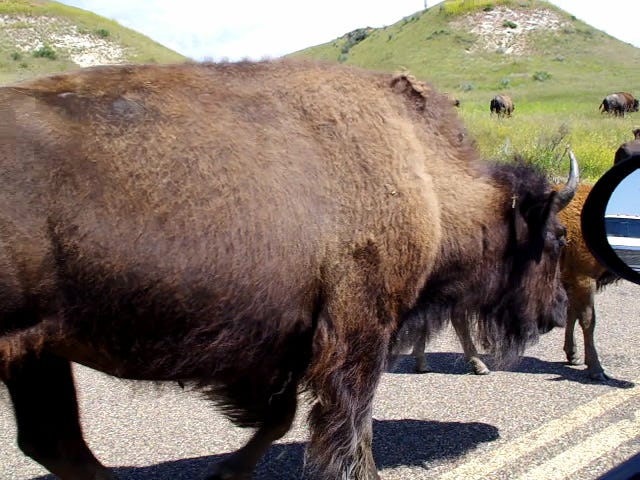
Bill Vossler
The history of conservation at the Bronx Zoo is a long one. In the late 1800s, it was estimated that only about 1,000 American bison remained in North America due to westward expansion and hunting of the once 40 million bison that had once existed. The man who assessed those numbers — William Hornaday — became the first director of what is now called the Bronx Zoo and led the efforts to save the bison from extinction, one of the greatest conservation stories in American history. Today, the bison no longer face extinction, but work continues to protect herds.
“For decades, zoos, aquariums, science centers and other facilities have been working with federal, state and tribal wildlife officials to care for and house endangered species, often at the direct request of the federal government and at the expense of the facility,” said Dan Ashe, president and CEO of the Association of Zoos and Aquariums (AZA), in a prepared statement.
The AZA accredits and monitors zoos and aquariums in 13 countries; only 214 are accredited in the United States. Part of the work expected from AZA-accredited parks includes conservation of animal species, including a favorite of zoo visitors for decades, no longer seen in most zoos: elephants.

The first elephant brought to the United States sold for $10,000 in New York in 1796, according to the National Park Service. The female pachyderm from India toured the eastern United States for two decades, and her last exhibition ever recorded was in 1818 in York, Pennsylvania.
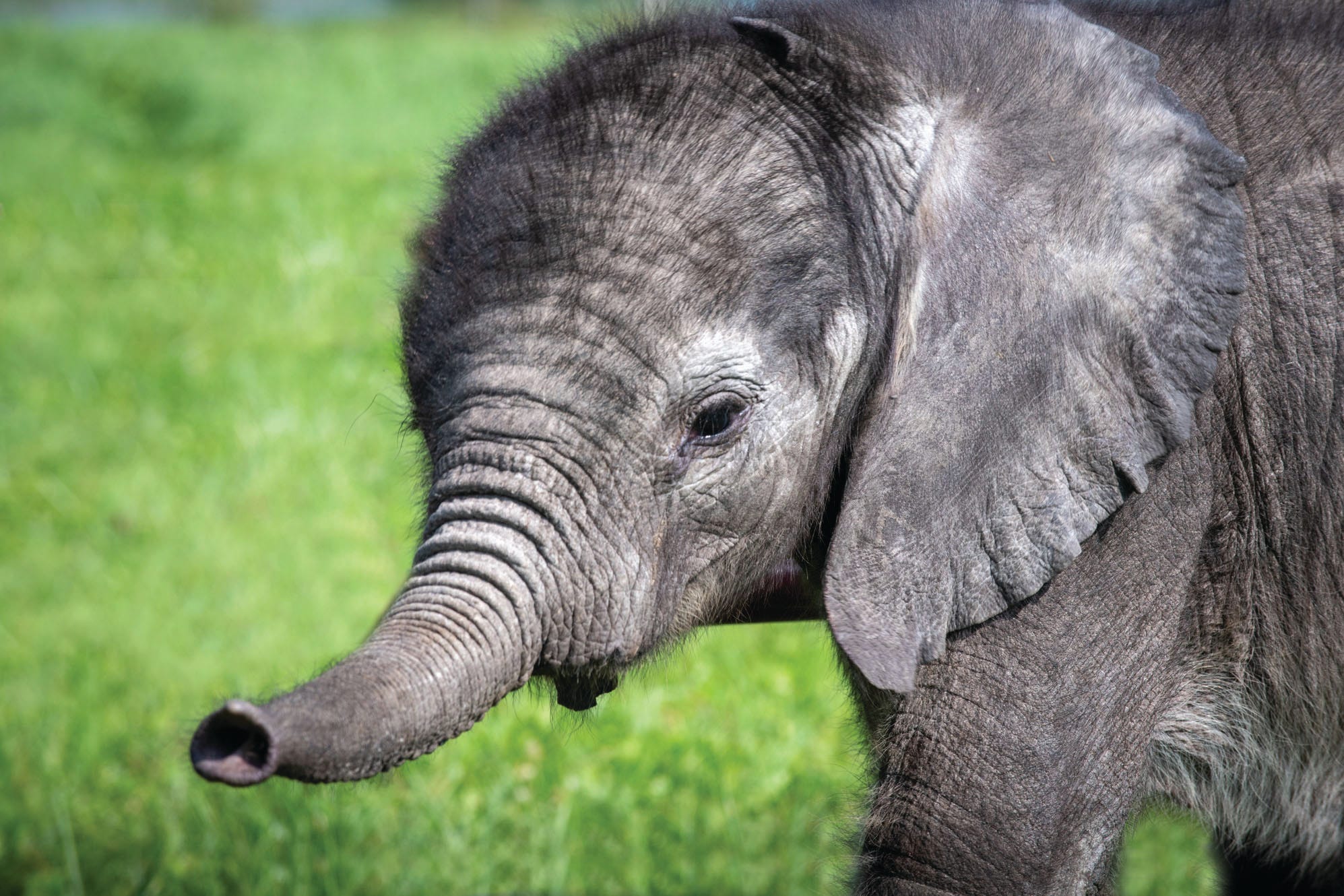
Provided by the Pittsburgh Zoo and Aquarium
Two centuries later, Americans’ wonder and fascination for elephants remain, and while zoos have helped them gain greater notoriety, most parks have made decisions in recent years to move them out.
Kallie and Bette became elephant celebrities when they arrived at the Philadelphia Zoo in 2005. The oldest zoo in the country, Philadelphia made a difficult decision four years later to move them out for financial reasons. By then, they were both almost 30 years old.
“We made a choice not to keep them at the zoo anymore, not because we are philosophically opposed to keeping elephants in zoos, but we realized we couldn’t do it well in Philadelphia, given the amount of space that we had, given the amount of money we had to devote to elephants at the time,” said Michael Stern, a Philadelphia Zoo zoologist.
Provided by the Maryland Zoo
The elephants were living in a barn that was state of the art when it was built in the 1920s, but it wasn’t holding up to modern standards for the animals’ care, he said.
The Philadelphia Zoo did what many other parks have done in the last decade: Send pachyderms to more spacious accommodations while the parks continue their focus on the animals through conservation.
“People come here missing the elephants, and we can tell them we are still supporting the elephants,” Stern said. “We are supporting elephant conservation in Western Uganda in multiple ways so that they can keep their habitat, so that we can help the relationships between the people around the national parks and the elephants that often do come out of the national park and raid people’s gardens.”
Today, Bette lives in western Pennsylvania at a sanctuary run by the Pittsburgh Zoo and Aquarium, according to Pittsburgh CEO Jeremy Goodman. The location in Somerset, is a 1,000-acre sanctuary called the International Conservation Center, typically closed to the public except for occasional school groups. Kallie moved to ICC for a time, but she was transferred to a location in the Midwest because of “herd dynamics,” Goodman said.

Kevin Barrett understands the mass appeal of big furry animals. He works at the Maryland Zoo among polar bears, chimpanzees and African penguins.
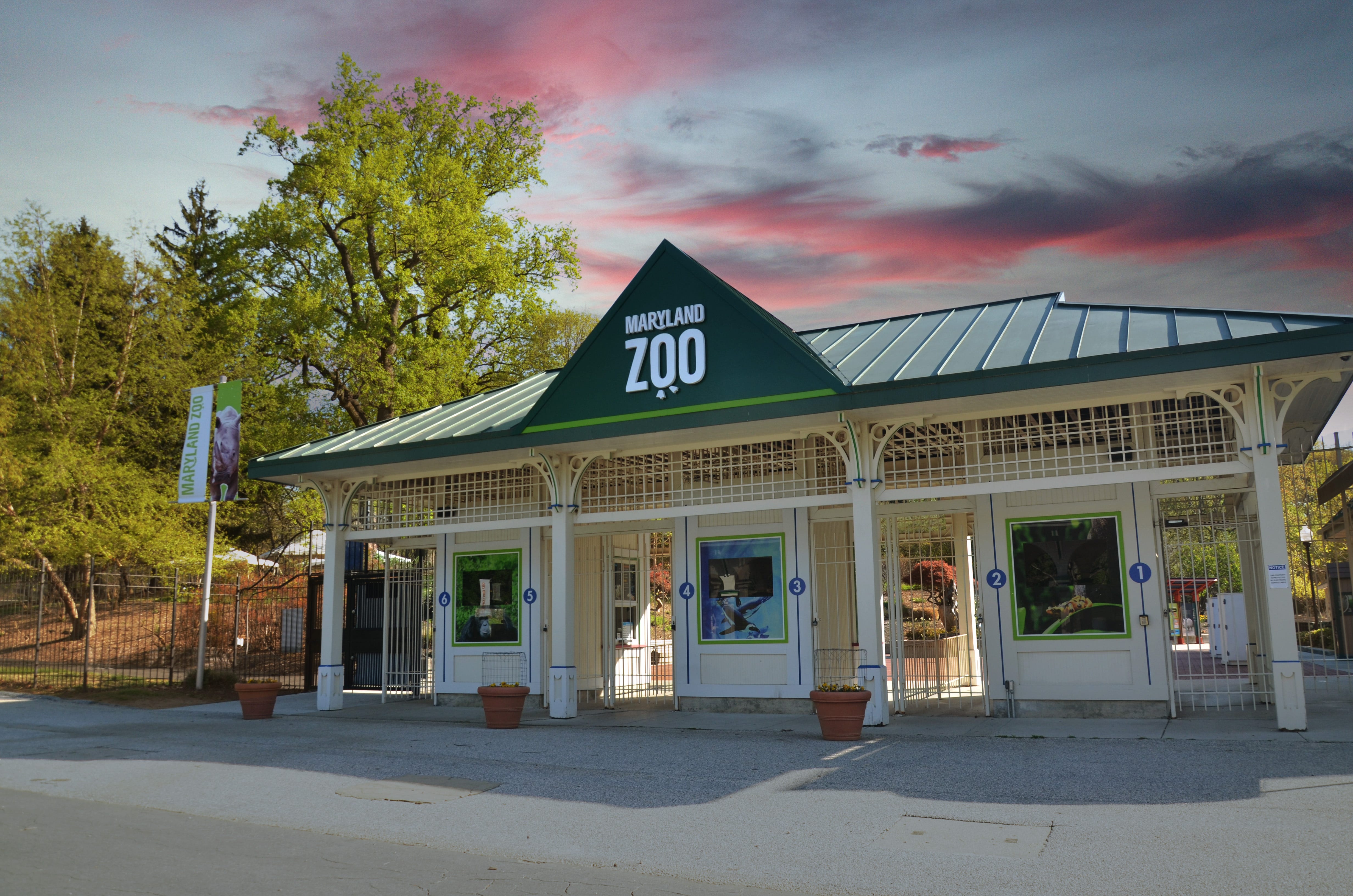
Provided by the Maryland Zoo
But he lives in a world of frogs, specifically the Panamanian golden frogs, a national symbol for good luck in their native country and under threat of extinction for a couple of decades.
The threat to those frogs came from a power plant that altered the environment where the frogs lived.
Human activities have had great impact on animals in the wild. Poaching and hunting get a lot of attention, but new infrastructure, climate change, pollution and disease are also creating environments that wildlife can’t navigate.
Barrett, the curator of reptiles and amphibians at the Maryland Zoo, is working on the species survival plan for the Panamanian golden frogs. Like many of his colleagues at other zoos, he does the quiet work of breeding, husbandry and medical care of these frogs, and he looks for zoo partners and financial support from those who also want to be involved in the project but frogs are a harder sell.
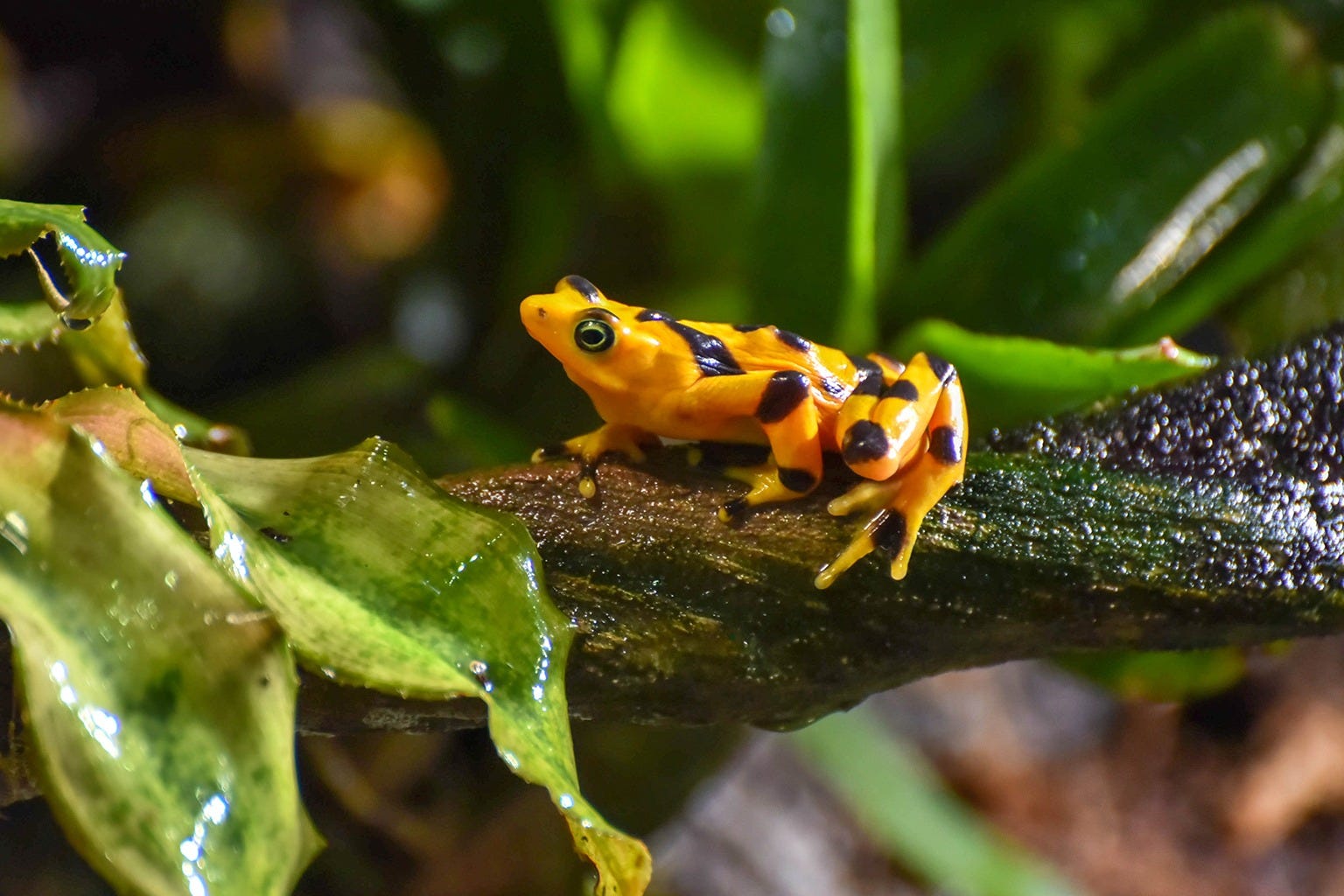
Provided by the Maryland Zoo
“They’re not the big, fluffy vertebrates that others gravitate towards,” he said. “But we can always use more help.”
The money funneled into conservation at zoos comes, in part, from gate ticket sales as well as donor funding. AZA-accredited zoos and aquariums spend about $160 million annually on more than 2,500 conservation projects across the world, according to the AZA.
Because of the work done in AZA-accredited zoos and aquariums, the federal government stepped in last year to provide $30 million of aid to zoos and aquariums. It was because, during the pandemic, they “found ways to continue their commitments to the rescue and recovery of endangered and threatened species while helping combat illegal wildlife trade,” according to the U.S. Fish and Wildlife Commission. Zoos and aquariums had lost an estimated $2 billion in revenue during the pandemic; the funding was part of the American Rescue Plan Act.

Winding among the sidewalks and around the displays at the Philadelphia Zoo are mesh-enclosed walkways where the animals move outside their home spaces to roam.
Called Zoo360, it debuted in 2011, and now that innovation is being replicated in Brazil, providing “land bridges” to protect thousands of animals.
Watch white-handed gibbons show off at the Philadelphia Zoo
White-handed gibbons, among the most agile animals are the planet, entertain kids at the Philadelphia Zoo.
USA TODAY NETWORK
The trail concept started with the golden lion tamarins, a long-time conservation project in Philadelphia. The tamarins’ home at the zoo was an old building, so enclosed trails would allow them to get outside of their exhibits and open the doors for the other animals — big and small — as well.
“That’s what helped get the conversation going about highway overpasses. It had never been done in Brazil before,” said Michael Stern, the zoo’s curator of primates and small mammals. As deforestation has hurt Brazil’s wildlife, these bypasses for animals connect them to forests that have been separated and thinned.
The work done inside zoos is vast, as each park works on conservation efforts, sometimes singularly, sometimes in coordination with other zoos and the AZA.
JOE LAMBERTI/USA TODAY NETWORK ATLANTIC GROUP
In New Jersey, a zoo is working to save and protect the five types of sea turtles found in the Atlantic Ocean, threatened by pollution, boating and coastal development. The Essex County Turtle Back Zoo partners with Sea Turtle Recovery, a nonprofit, to provide a hospital that even includes an intensive care unit.
Sea turtle recovery is also happening far offshore — at the Pittsburgh Zoo and Aquarium. In March, seven Kemp’s Ridley sea turtles were driven to Port Canaveral, Florida, to be released. Three months earlier, they had been rescued in December in cool waters, leaving them stunned.
Rehabilitation at the zoo ended with a ride in in a warm van. The windows were lowered for the turtles to smell the ocean before release, then a crowd gathered to watch the animals return home.

A bear named Dillan lived in a small, concrete-floored cage at a Pennsylvania sportsmen’s club for years, as part of a small roadside zoo attraction near the club’s shooting range.
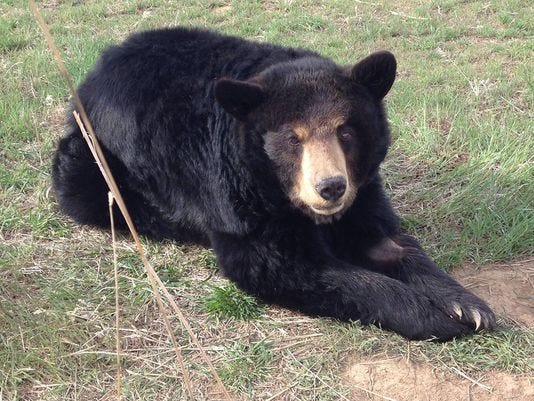
The Wild Animal Sanctuary
Dillan had grown to become morbidly obese with “horrific dental disease,” according to Brittany Peet, a lawyer with PETA.
Rescuing him from that cage took more than PETA and more than an inspector from the U.S. Department of Agriculture. It took a Hollywood celebrity and the Pennsylvania governor for the sportsmen’s club to agree to give up Dillan.
“Despite the USDA documenting these inspections and the national headlines and PETA pleading for the right thing, he was never confiscated” by the government, said Peet, deputy general counsel for captive animal law enforcement. When actor Alec Baldwin became aware of Dillan, he spoke out, then Gov. Tom Wolf wrote about it on Twitter. It was only then that the Union County Sportsmen’s Club released the bear into PETA’s care. He was removed in 2020, underwent dental surgery and has lost weight.
The club’s facility is called a roadside zoo, and there are thousands of them across the country, offering small petting facilities of animals large and small. The problem is especially bad in Pennsylvania, according to Peet, because of lack of enforcement.
Her advice to families who see a roadside zoo: “Roadside zoos are never OK. Keep driving by.”
These tourist sites simply apply for a license to hold animals but are not closely monitored, Peet said, unlike AZA-accredited zoos.
“PETA’s position is that wild animals belong in the wild, but when they can’t be, such as when they’re injured, ill or habituated to humans, as is the case with most wildlife currently in captivity, that they’ll receive the best care in AZA-accredited facilities because of those higher standards of animal care and the third-party oversight to act as an extra protection of animals,” she said.

At the end of April each year, the eggs of regal fritillary butterflies are released into the artillery range at Fort Indiantown Gap.
It might seem a strange place for butterflies to thrive, but they do. In fact, military lands are such rich environments for wildlife that biologists are employed by branches of the military to help preserve species living there.
ZooAmerica prepares to release thousands of regal fritillary caterpillars into wild
ZooAmerica has undertaken a decades-long project to help rebuild the dwindling regal fritillary population.
Dan Rainville, York Daily Record
When ZooAmerica’s Tim Becker discovered the endangered butterfly at the Gap, biologists there already had an eye on them.
Together, the biologists from the zoo and the military work on replenishing the insects at the end of each April from eggs collected a year earlier, then the scientists return mid-summer to check on the butterfly population.
Becker loves the work, and he sees endless possibilities of the species of animals that can be saved.
“I always have ideas of what I would do next, what other species I would work with,” he said. “I’m pretty fulfilled by what I do, but if you get into the dreaming and scheming, it’s not too hard to find the next thing to do.”
Kim Strong can be reached at kstrong@gannett.com.